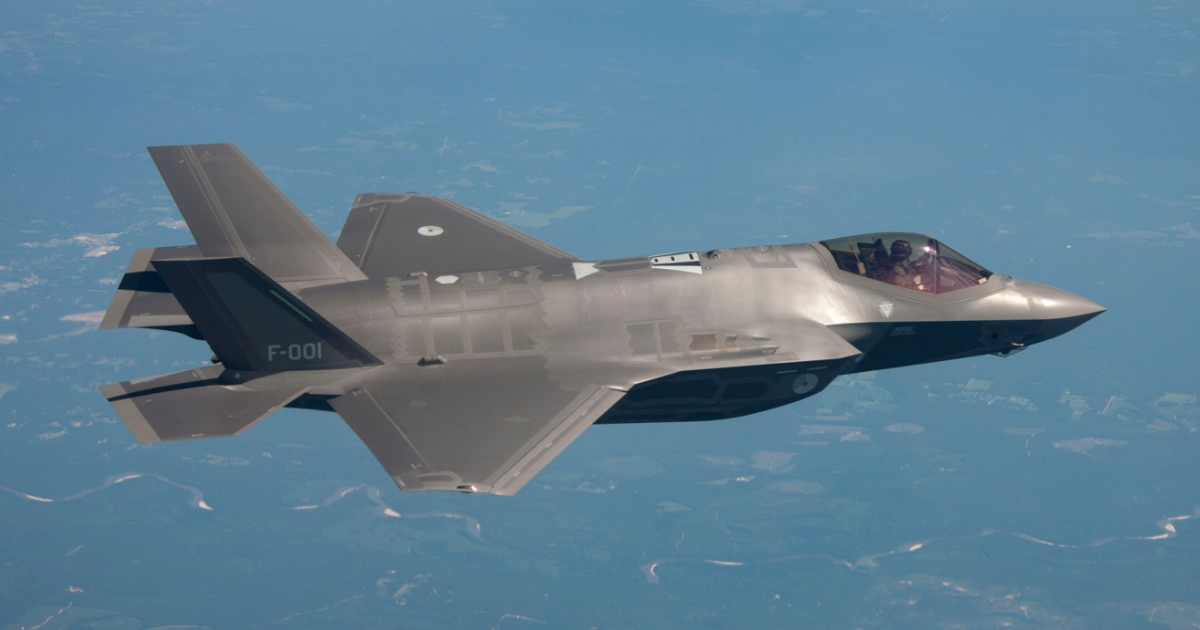There are very few issues upon which we agree with Trump here at The Ring of Fire – but as Thom Hartmann periodically points out, “even a stopped clock is right twice a day.”
In this case, it is Lockheed-Martin’s “latest and greatest” product – the fifth-generation fighter jet aircraft known as the F-35, also known as the “Lightning II” and “Joint Strike Fighter” (JSF). But by most reports, the F-35 is more of a sputtering short circuit than a full-blown bolt of lighting.
In the September 2013 issue of Vanity Fair, Adam Ciralsky reported that the “Joint Strike Fighter is the most expensive weapons system ever developed…plagued by design flaws and cost overruns.”
That’s putting it mildly.
The JSF program got started in the wake of the 9/11 attacks, in October 2001. The objective was to replace the military’s aging fleet of “fourth generation” planes with a new breed of fighters, featuring advanced capabilities and cutting-edge technology. At that time, the Defense Department entered into a contract with Lockheed-Martin for a total of 2,852 aircraft, at an estimated price tag of $233 billion. On their end, Lockheed-Martin promised to deliver the first squadrons of “combat capable” aircraft by 2010.
That was over six years ago. As of 2014, the program was over budget by $163 billion and and seven years behind schedule. By that time, the total cost to US taxpayers was twice as much as a single Apollo Moon mission (adjusted for inflation) – a whopping $400 billion.
At that time, Lt. General Christopher Brogan, who was in charge of the F-35 program, reported numerous problems, which included a valve that had been installed incorrectly, wing lights that failed to meet FAA requirements, and even a tire that couldn’t stand up to the rigors of a normal landing. Each of the problems added to the cost – and Brogan finally told Lockheed-Martin that the Department of Defense was not going to pay for these mistakes any longer.
In an interview on CBS’ 60 Minutes, Brogan described the relationship between the DoD and Lockheed-Martin as “the worst…I had seen in my acquisition career.”
The F-35 had big aspirations. Lt. General Robert Schmidle, USMC, described the plane as a “flying computer” that was able to detect an enemy plane up to ten times faster than anything else in the sky. The plane is designed for vertical takeoff, and features the latest, low-maintenance stealth technology, a helmet-mounted display that gives the pilot a 360 degree view, computerized maintenance management systems, and more.
Yet, the F-35 continues to fail to live of up to all of these grandiose promises. A memo released through the Office of Director, Operational Test and Evaluation (DOTE) describes this “super weapon” as a “flying tinderbox…[that] will need to be nursemaided by other aircraft that are actually combat capable.” In a report for Fiscal Year 2014, DOTE an extensive list of all the problems that have plagued the program for years, including engine failures, reduced maneuverability and aerodynamic capabilities, software glitches and maintenance issues that would mean the typical F-35 would be spending five days a week in the hangar. Mike Fredenburg, a defense analyst for the National Review, calls the F-35 program “irredeemable.”
In short, the F-35 program is a bust. Several countries that were considering the purchase of F-35s – including Canada, Australia and Israel – are now looking to alternatives. Trump himself is ready to pull the plug on the entire program and has approached Boeing to provide estimates for the delivery of its own fifth-generation fighter jet, the F-18 Super Hornet.
However, since Congress actually controls the purse strings – and several members are from districts in which Lockheed-Martin is a major employer – it is not entirely certain how much Trump could do. Many in Congress who are critical of the F-35 program are calling it “too big to fail.”
Yet, it seems to have been failing for years. Lockheed-Martin has had more than a decade to get this right, and it hasn’t managed to do it yet. Over and over again, while average Americans lose their jobs and their homes and continue to struggle in a rigged system, the Federal government continues to provide ill-advised “bailouts” to industries that, by rights (according to the rules of the marketplace) should simply be allowed to whither on the vine.
The F-35 program is clearly a money pit, and despite the questionable optimism of some higher-ups in the military, there appears to be no end in sight.
Trump may be wrong, and even clueless on the vast majority of issues – but in the case of pulling the plug on the F-35 program, he may just have it right.



